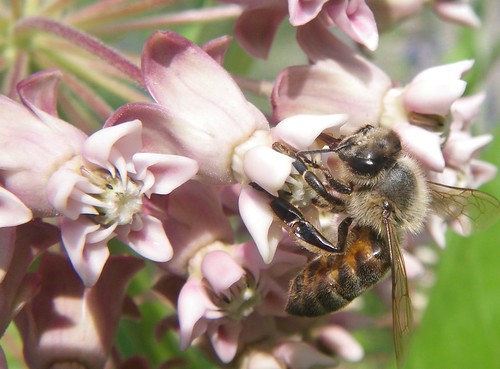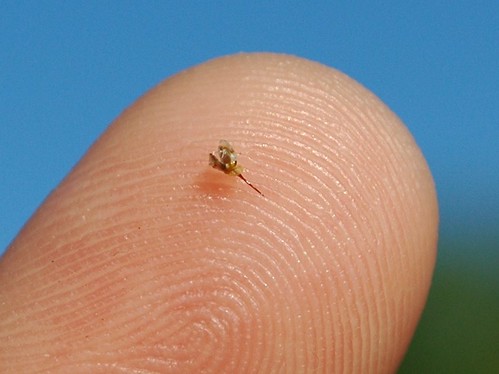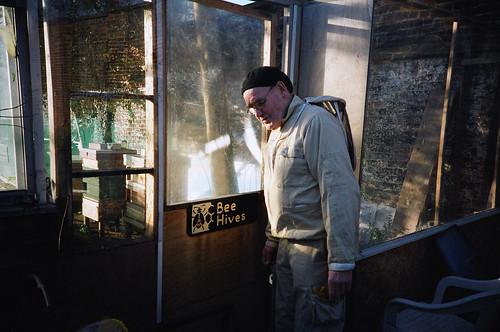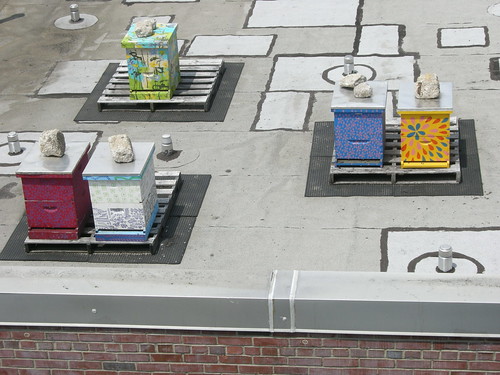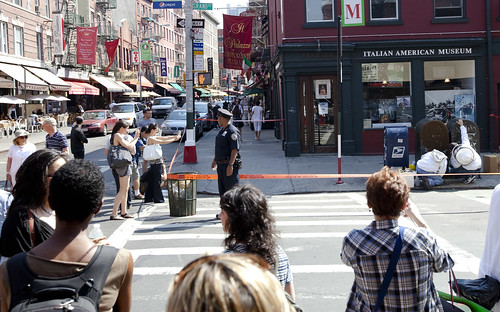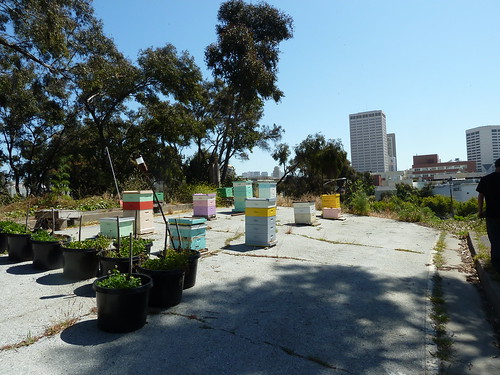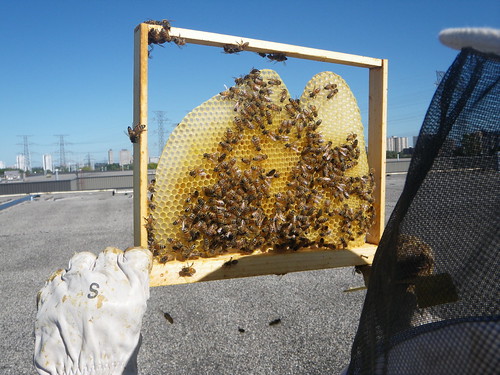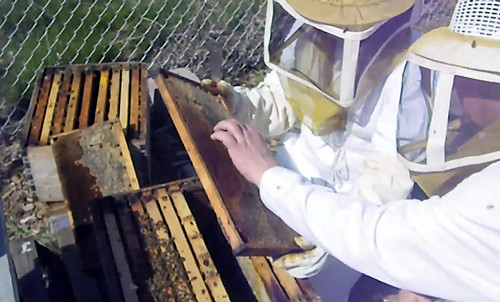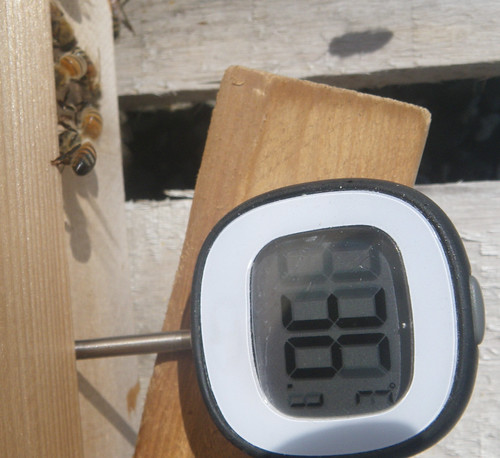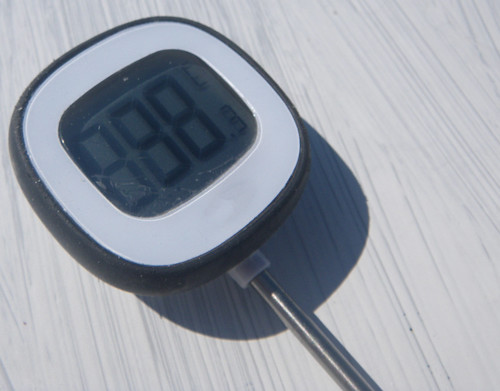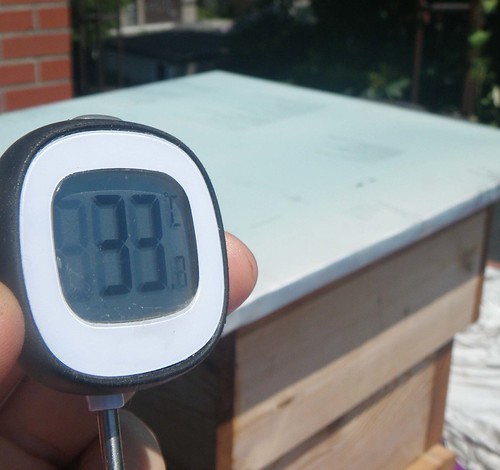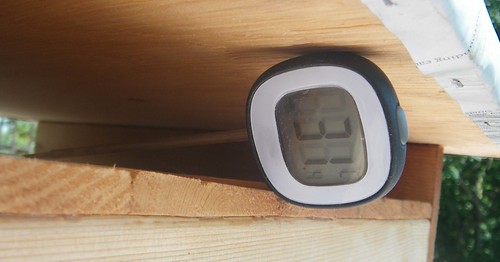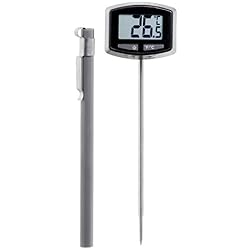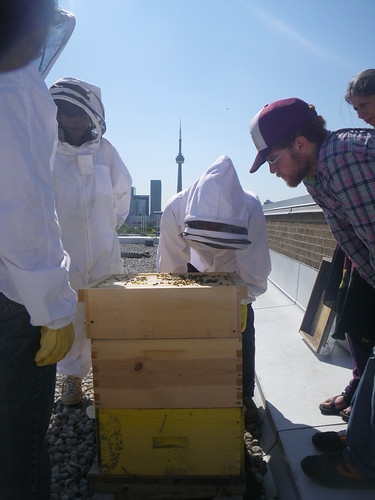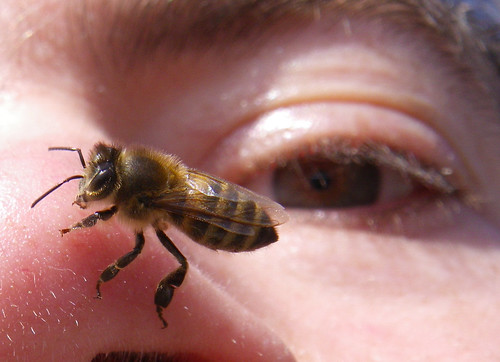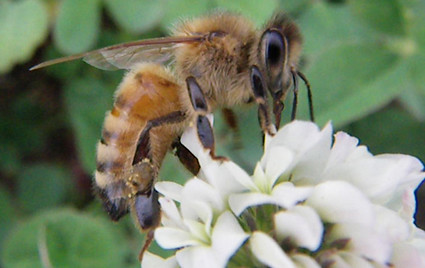6. How well do you know the neighbourhood?
Whether rural or urban, beekeepers rarely (if ever) have the luxury of controlling the entire forage area of their live stock. The moment your bees fly out from the hive, they are at the mercy of the surrounding community.
Bees are opportunistic; if there is something interesting and abundant close by, they may not travel all that far from the hive. If pickings are slim, however, bees will extend their search. Even at six kilometres away from flowers they will still manage to produce some amount of honey, though ideally they will have many foraging options within one kilometer.
You want to look for an area that has at least an acre's worth per hive of a variety of honey bee friendly flowers blooming throughout the year. At the same time, you want to be cautious of things that may spoil your honey or cause harm to your bees. For example, hives in new york city ended up producing an unusual bright red honey after the bees discovered the maraschino syrup at a cherry factory.
Last summer, after a few months at a new location, I noticed a waste transfer facility near by, and it suddenly dawned on me that proximity to this trash site was probably a significant factor in explaining why I had so many wasps going after my bees.
One of the interesting things about keeping bees is how acutely aware they ask you to be about interconnections in the broader ecosystem surrounding you. It will be impossible to anticipate everything, but familiarity with the community will help guide you to good locations and steer you away from potential problems.
7. What makes bees grumpy?
A beekeeper is going to get stung from time to time, but it doesn't need to happen all the time, and ideally, the non-beekeepers around you will never ever catch a sting.
If you know how to keep your bees happy and peaceful, it will make beekeeping more fun for you and further reduce the risk of problems with the people around you. Some examples of things that may make your bees more irritated are:
- Vibrations (eg. a colony too close to heavy construction, an HVAC system, rough hive checks)
- Bee-eating skunks frequently scratching at the hive
- Weather conditions
- Genetics
- Lack of food or water
The source of some problems, like the weather, are completly out of your control, but there is almost always something you can do to at least mitigate an unpleasent situation.
8. Where will the bees get their water?
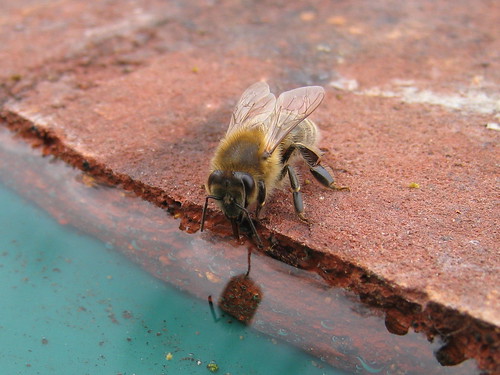 Bees collect water to use for a variety of purposes. The classic problem this presents for city beekeepers is the swimming pool lined with thirsty bees scenario.
Bees collect water to use for a variety of purposes. The classic problem this presents for city beekeepers is the swimming pool lined with thirsty bees scenario.
Less obvious water sources, like a leaky water faucet in a neighbours yard, may also lead bees to congregate in places where they are unwelcome. You can try to provide a water source of your own, but training them to it from the beginning, and ensuring distance from potentially problematic water sources will make this easier.
9. What factors do I need to consider while locating hives on my site?
There's lots of general information out there that describes ideal conditions for beehive placement. Here are a few of the more urban specific considerations to keep in mind:
You don't want the flight paths of your bees in, out and around the hive to cross people paths. In Vancouver, it's required to use an obstruction like fencing or hedges, if not placements at higher heights to keep bees up and over the heads of neighbours.
Personally, I'm a big fan of rooftop beekeeping. Rooftops that are fairly private can provide you with a nice safe space away from other people.
With the frosty winters my bees experience in Canada, a little extra residual heat rising up from a heated building, or off the side of a brick wall is a plus.
The down sides to rooftop hives are that a) they are more likely to be exposed to wind; b) it can get a little too hot in the summers; and c) if you are going to depend on a ladder for access, harvesting heavy boxes of honey takes a little more thought and a great deal more effort.
10. What is my population growth strategy?
When getting started, all the focus is geared towards figuring out how to get going and learning how to keep your bees alive. If you succeed and get a strong colony through the first winter (or simply don't provide a weak colony the right kind of space), you might find yourself struggling to figure out how to handle colonies that want to reproduce. This aspect of bee management can be particularly challenging for beekeepers who may not have the time or space to manage additional hives. Some hobby beekeepers deal with this beekeeping challenge by choosing not to keep the surplus bees at all, simply allowing their swarms to fly into the wild. I see this approach as problematic for two reasons:
- The areas surrounding an urban apiary are not particularly wild. There have been a number of stories in the media where bees ended up closing busy streets. It's also common to hear about property damage caused by bees moving into the wall of house.

- On the continent where I live the honeybee is an introduced species. Increasing the population of feral honeybees decreases the potential for you and other beekeepers in the area to produce a local food product without impacting the wild native pollinators.
Learn as much as you can about the behaviour surrounding colony reproduction so you will be able to:
- Identify when it is happening and attempt to prevent it.
- Manage reproduction and plan to keep the additional hives or have other beekeepers lined up who are ready and willing to receive your excess colonies
- Manage your colonies in such a way that any increases are only temporary.
In this day and age in particular, so long as you are prepared, a case of too many colonies is a wonderful problem to have.


